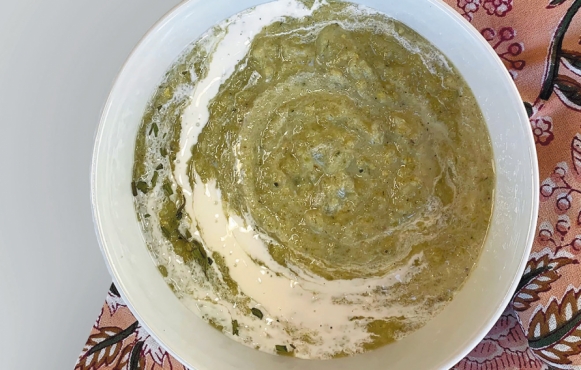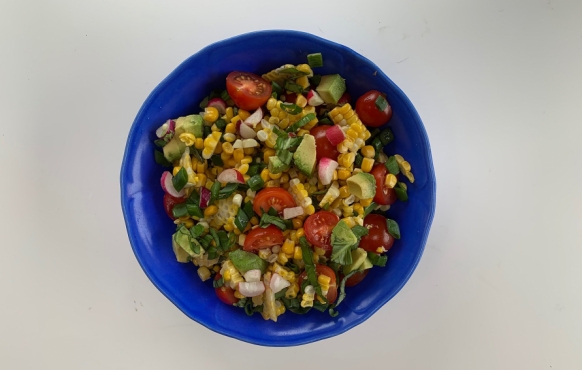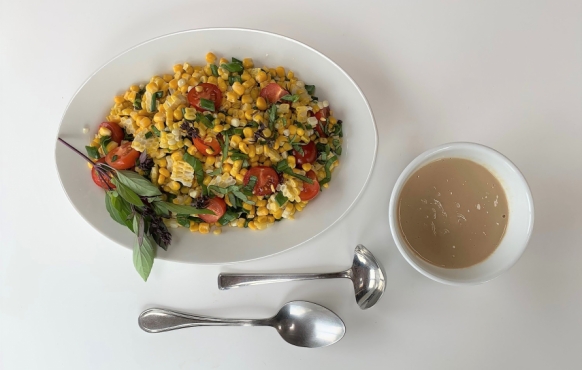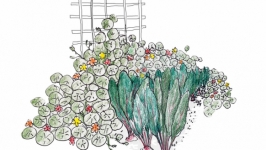Freshly Picked Summer Corn
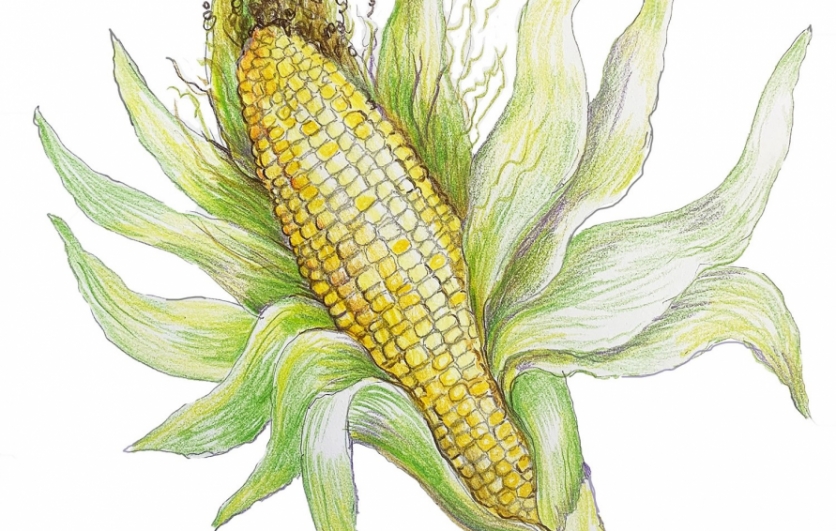
Nothing says summer better than your first bite of freshly picked local sweet corn. With over 200 varieties of sweet corn to choose from, how do you select the very best? The answer is quite simple: Find a variety that will get from the field to your table in the quickest way possible. From the moment it is picked, the sugary sweetness in the kernel starts converting into starch. So, the fresher and more local your corn, the better. The corn your grandmother cooked and ate could become starchy within hours; but after decades of selective breeding, most sweet corn today can last a bit longer—up to about a week in the fridge.
SOME LIKE IT HOT. SOME NOT.
Once you get your hands on some freshly picked corn, what’s the best way to prepare it? Some people like their super fresh corn raw! It is a crunchy addition to salads and enjoyable just off the cob. If you prefer it hot, my favorite way to cook corn is to steam it in its own natural packaging in the oven.
Leaving the husks on keeps the corn moist and helps to retain the nutrients that boil away when you cook your corn in a pot. Peel off the outermost leaves so that you have a nice clean corn case. Then, with the oven preheated to 350 degrees, stack your corn directly on the racks. Roast for about 30 minutes, until the kernels are nice and tender. It’s a great way to feed a crowd. No pots to clean and no mess from shucking. Those annoying silks come off easily with the husks after roasting. With a slight twist the husks also make a nice handle for rolling the steamy cob in butter or another favorite topping.
I find that the controlled, closed oven results in corn perfection. But if time isn’t on your side or it’s too hot to turn on the oven, there are ways to achieve similar results. In the microwave, you can steam your fully dressed cobs on high for 3–5 minutes. You may have to adjust your timing depending on how much corn you cook at once. You can also steam your corn on the grill. This takes a little more attention because you need to keep turning the corn so that it cooks evenly. In all cases you still want to remove the outermost leaves and rinse off any dirt before cooking.
After enjoying a meal of corn on the cob, leftovers can be enjoyed as soup or salad. (This is why you jam pack that oven and cook a lot!)
BETTER THAN BUTTER?
Melted butter is a traditional topping on corn. To kick it up a notch, try adding simple seasonings. Herbed butter or herbed salts are nice options. I love black garlic salt. Herb-infused olive oils are also yummy alternatives. If you want to spice things up, try stirring some smoked paprika and a pinch of cayenne into your butter or oil. Or try ready-made mixes such as Italian bread dipping mix, dukkah for nutty flavoring, or harissa for complex spiciness.
CORN ANATOMY
As you husk your corn and are fussing with the silks it is easy to miss the miracle they represent. Those silks are an integral part of helping a plant grow from a simple seed to something ready for steaming. A seed is nature’s way of creating a perfect little space and time capsule for a plant to begin life on this planet. A corn kernel starts as a little egg arranged with other eggs in rows on a cob. Every egg is attached to one silk that literally becomes its lifeline. When this silk emerges from the top of the husk in a mass of tiny curls, the egg can be fertilized. The tassel that appears at the top of the stalk is filled with the magic of pollen, which, with assistance from the wind, makes its way down each little silk to help it become an embryo. Each embryo develops in its miniature life support system: a kernel with a protective hull filled with sugary food to provide energy as the germ, or embryo, puts out roots and its first shoot. That little pocket of sweet sustenance forms the essential element of your first delicious bite of summer sweet corn.


